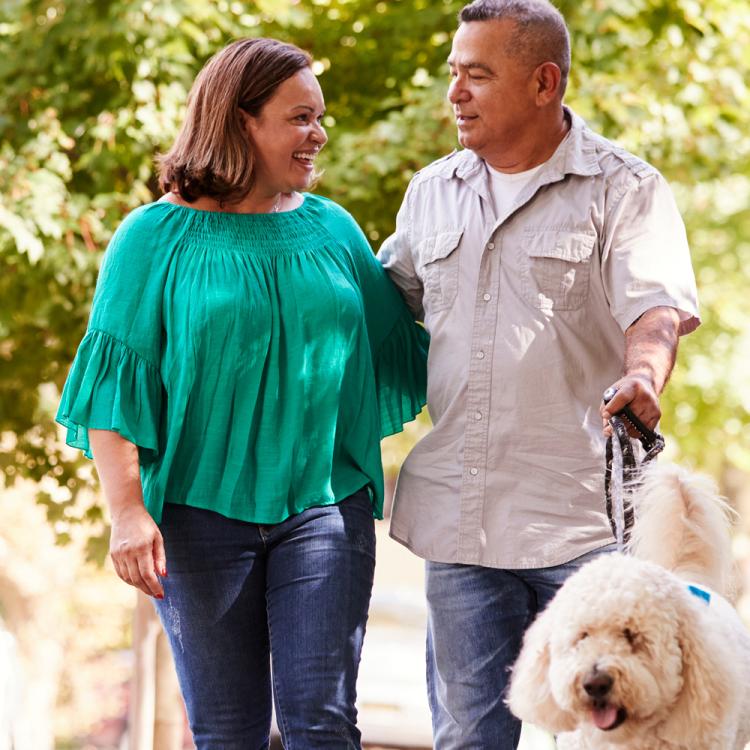If you’ve never been physically active or have been sedentary for a while, it’s important to start getting active slowly. Walking is one of the easiest activities to start with, and most people with diabetes can do it. The risk of injury is low, and even people with diabetes complications can usually walk for exercise. (Check with your health care provider if you have a foot injury, open sore, or ulcer.)



You don’t need any special equipment, clothing, or even shoes to begin walking for your health, but it may help you stay motivated if you wear comfortable clothes and shoes. Pick a safe place to walk and invite a friend to join you! Or if you prefer some alone time, listen to music, audiobooks, podcasts (if you can do so safely), or catch up with friends and family by phone while you walk. The key to success is to make it an enjoyable part of your routine that you look forward to every day. This will help it become a healthy habit for life.
How Walking Helps Your Health
Walking at a brisk pace or moderate intensity is an aerobic exercise. When you do aerobic activities regularly over time, you can see many health benefits:
- Blood glucose (blood sugar) levels go down
- Insulin sensitivity goes up
- Heart health improves
- Metabolism increases
- Weight loss or maintenance becomes easier
- Balance improves
- Blood pressure decreases
- HDL (“good”) cholesterol increases
- LDL (“bad”) cholesterol decreases
- Your mood is better
- You feel more focused and alert
- Memory and cognition improve
How to Get Started Safely
It’s important to check your blood glucose (blood sugar) level more often when you begin being active or increase the intensity of exercise. Check it both before and after you walk. This will help you see how your body reacts and help you avoid possible drops in blood glucose (hypoglycemia) that can be dangerous. Learn more about blood glucose and exercise.
It’s never too late to start! But if you’ve been very inactive for a while, start slowly and walk for just a few minutes the first time. The more you walk, the easier it will get, and you’ll be able to add intensity by increasing your time, pace, or distance.
And remember, it all adds up. If you can’t walk for 30 minutes each day, try two 15-minute or three 10-minute walks during the day. And try to build up to five 30-minute walks each week.
Other Easy Ways to Walk More
- Walk instead of driving to nearby destinations
- If driving, park a bit farther away from your destination
- Get off the bus or train at a farther stop and walk the rest of the way
- If you have a dog, walk it daily, or offer to walk a neighbor or friend’s dog
- When traveling, take walking tours to see the sights
- Start or join a walking group in your neighborhood or at work
Start walking more today and reap the benefits!

